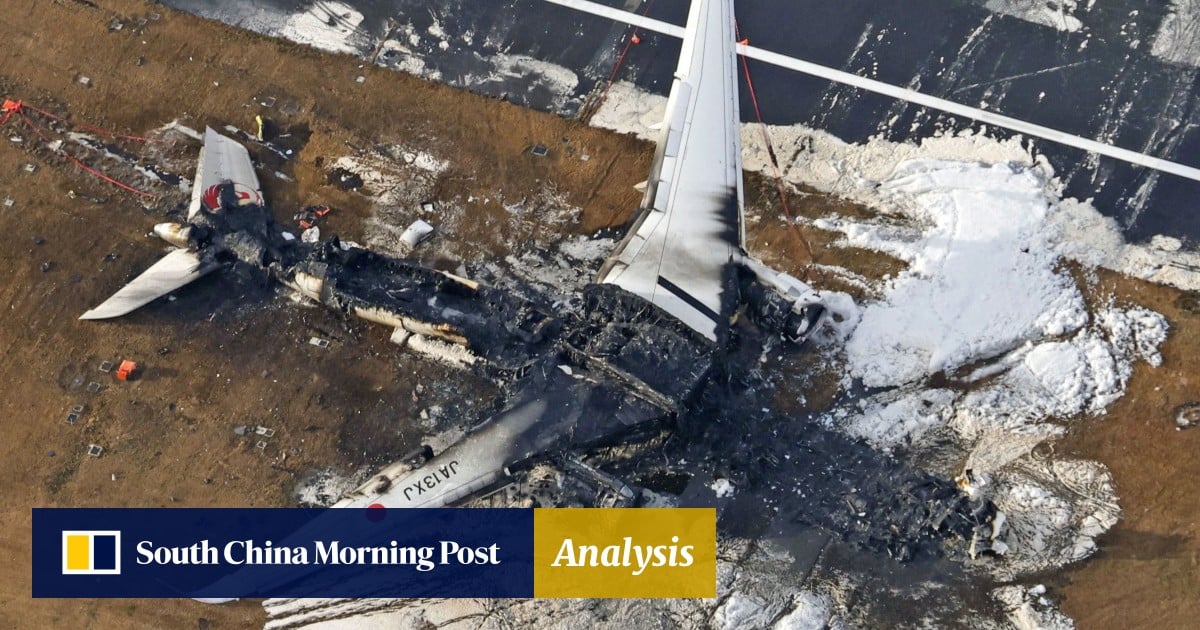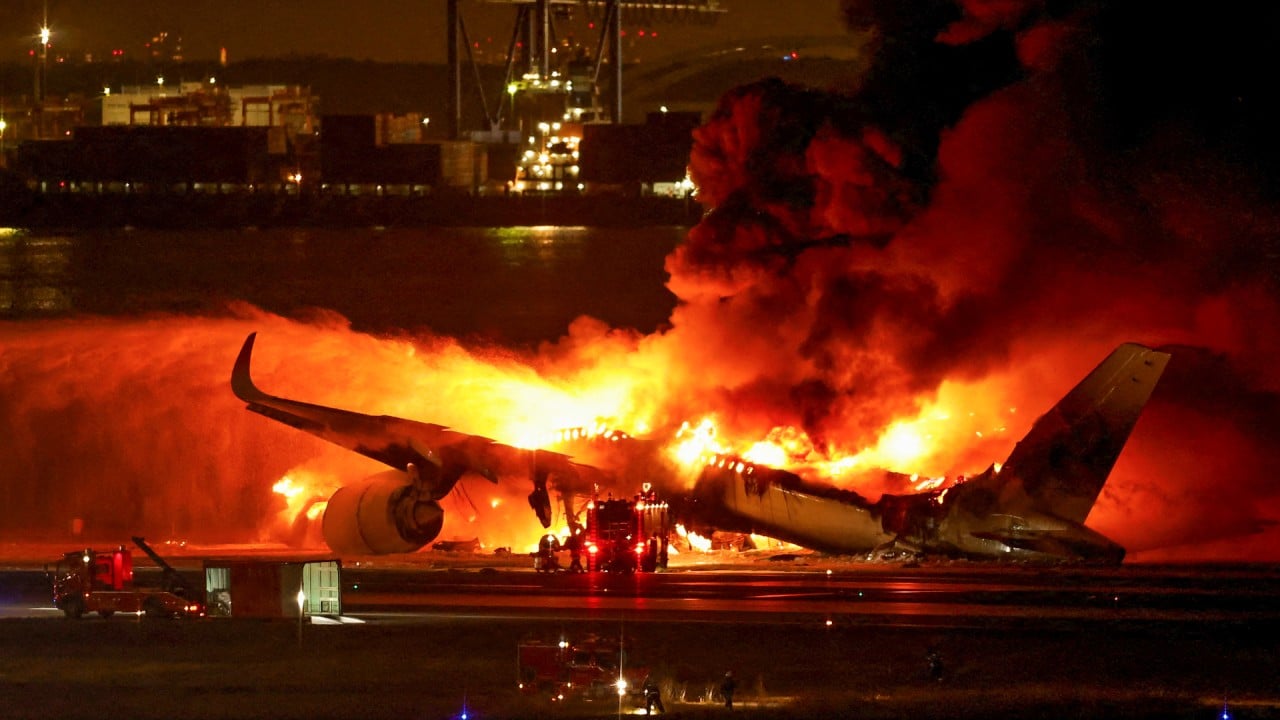The crash “is really the first case study that we have, not only from a fire perspective, but also just from a crash survivability perspective,” said Anthony Brickhouse, an air safety expert at Embry-Riddle Aeronautical University.
Both Boeing, with the 787 Dreamliner, and Airbus, with the A350, made big bets in the early 2000s that lightweight carbon composites would produce major fuel savings and be less susceptible to fatigue, reducing maintenance.
Japan Airlines pilots initially did not know plane was burning: report
Japan Airlines pilots initially did not know plane was burning: report
Shortly after being put into service, the Dreamliner contended with battery problems that led to fires, resulting in its brief grounding in early 2013. A later fire on an Ethiopian Airlines 787 in July 2013 was caused by a short circuit in the jet’s emergency locator transmitter and led to fuselage repairs.
None of these incidents resulted in hull losses, however.
The A350 contains 53 per cent composite materials by weight, with composites making up most of its external structure, including its fuselage, major portions of its tail and wings, and part of the nose section.
Experts said the fact that all passengers and crew evacuated safely while the structure was intact will renew confidence in the materials which were certified with special conditions.
But they cautioned it is too early to draw full conclusions about how the A350’s composite hull held up against fire or what technological lessons may be learned.
Comparing the A350 crash to a 2013 crash involving a Boeing 777 operated by Asiana Airlines – which caught fire after it struck a sea wall, killing three passengers – could provide engineers with valuable insights into the differences between composite and aluminium planes during a fire, Brickhouse said.
The JAL A350 is the first commercial airliner built mainly of composites to be destroyed by fire but not the first transport aircraft, though it is unclear what lessons about composite fires will be available to Japanese investigators.
In 2015, an Airbus A400M military airlifter – which also relies heavily on composites – ploughed into a field outside Seville, Spain, after wrongly installed software jammed its engines. But an investigation into the crash by Spanish military investigators was kept confidential.
The accident, which resulted in a high-speed impact and fire, killed all four flight test crew and left hardly any visible trace of the plane in the blackened earth.
Composite airframes have several advantages over aluminium planes, said Bjorn Fehrm, a composites expert at trade publication Leeham News.
While aluminium has a melting point of about 600 degrees Celsius (1,100 degrees Fahrenheit) and conducts heat, carbon fibre can withstand temperatures about six times that, with the structure smouldering and burning away instead of melting, he said.
‘I thought we wouldn’t survive’: how 367 flyers were saved from Japan jet blaze
‘I thought we wouldn’t survive’: how 367 flyers were saved from Japan jet blaze
Airbus, in a 2019 guide for firefighters, said the A350 showed “an equivalent level of safety” compared to traditional aluminium planes, with tests showing an “increased resistance” to fire penetration.
But when exposed to intense heat for long periods of time, Airbus noted that composite airframes can lose their structural integrity even if the composite skin appears to be intact.
In particular, the resin will burn off first and flames will propagate more slowly while the fire is ongoing, according to a United States Federal Aviation Administration document.
The JAL A350 burned for more than six hours before firefighters were able to completely extinguish the flames, broadcaster TBS reported, citing the fire department.
That raises a question about whether firefighters need additional training for handling fires involving composite jets.

Photos of the accident showed firefighters wearing surgical masks and helmets but no other protective clothing.
“The fire brigades of the airports actually have to look at why couldn’t they stop the fire,” Fehrm said.
Airbus noted earlier tests have shown composites offer similar fire-resistance to aluminium, with a spokesperson adding that it had carried out a full evacuation test of the Airbus A350-1000 in 2018 with authorities present.
Various factors can impact how flammable composites are, including the structure, fibre materials and layers of fire-blockers used, said Nabil Al Kabir, a sales manager at German fire safety solutions firm svt Products GmbH.
“One point can be taken for sure, if the heat generated from burning kerosene is that intense, aluminium would also fail.”


